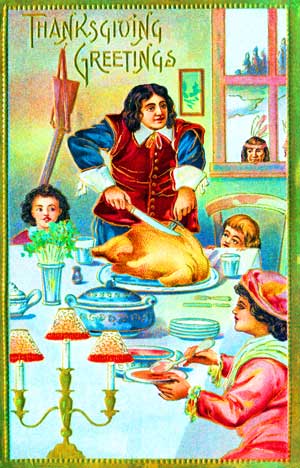James Wesley Dodd was born on March 28, 1910, in Cincinnati, Ohio. His birth name was Ivan Wesley Dodd, but he started going by James when he was still a child, and legally changed his first name from Ivan to James when he was thirty-nine years old. His parents were John Wesley Dodd and Luella Thede. His father worked in a music store and performed on local AM radio. His mother was a stenographer.
James’s parents divorced when he was still young, but they lived only a few doors away from each other for much of James’s childhood. This allowed him to go between the houses of his parents with ease, pretty much whenever he wanted to. The easy access to instruments provided to him by his father allowed James to develop a love of music when he was still a small child. He also learned salesman skills by watching his father at work at the music store, and he used these skills in his later career as an entertainer.
James’s mother remarried to Alfred Brauer when James was twelve years old, but the marriage was short-lived. His mother is listed as a widow in the 1930 US Federal Census.
In high school, James was known as “Red.” His senior class yearbook lists him as a member of the Astronomy Club, and states that he was known for being “jauntily decked.” After high school, James attended the University of Cincinnati, and then the Cincinnati Conservatory of Music. At the Conservatory, he played banjo in a band and began getting gigs to sing on the radio.
James looked for work after graduating from the Conservatory, looking in places like St. Petersburg, Florida, and Nashville, Tennessee. In Nashville, James attended Vanderbilt University. In around 1940, he and his mom moved to southern California, landing in Los Angeles. There, James found work in nightclubs, and procured his first role in a movie in 1940, in a small part in Those Were the Days, which starred William Holden.
After this, James was able to get some other acting work, landing gigs in movies such as The Three Mesquiteers series of westerns, Flying Tigers, Janie (in which he sang a little), Keep Your Powder Dry, China’s Little Devils, Easter Parade, Quicksand, The Jackie Robinson Story, The Winning Team, and Phffft. Some of his co-stars included such luminaries in the acting world as John Wayne, Ronald Reagan, Judy Garland, Mickey Rooney, and Fred Astaire. He also had many uncredited roles in movies during his pre-Disney career. Most of the movies in which he appeared were in the 1940s and early 1950s.
James had a heart condition that he was born with that prevented him from being drafted into the military during WWII. By the time the war came to America, though, he was married to his wife, Ruth, and they put together a double act between them that they brought to the military abroad on USO tours. After the war, James and Ruth came back home to California. Showbiz work was not as plentiful or as well-paying as it had been before they left, and James considered looking for a job outside the industry that paid better than the tiny number of gigs he was being offered. Around that time, God made it clear He had other plans for James.
James heard that the Disney Company was looking for a song to be the theme song for a nighttime TV show it was creating. James sent in a demo tape of one of his songs, and Disney executives offered him a job as a staff music writer on this new TV show. When Disney executives asked him how he envisioned a video to accompany the theme song, they were so impressed with his idea that they offered him the job of hosting this new show, which was going to be called The Mickey Mouse Club. James accepted and personally helped Roy Williams, Bill Walsh, and Walt Disney himself choose the cast of kids for the show. His theme song became the theme song of the show, and a slower version of it with different lyrics became the closing theme to each episode.
James, going as Jimmie Dodd, served as the host of The Mickey Mouse Club for its entire original airing on TV, as well as being involved in live tours of the cast around the world and at Disneyland, and also hosted the show in reruns for the first couple of years after original episodes stopped being made. James continued working with the Disney Company for the rest of his life.
While on The Mickey Mouse Club, which aired each weekday during production seasons, James always wore the same mouse-eared hat as the kids on the show. He played his “Mouse-guitar,” and sang songs he wrote himself for the show. The songs contained positive messages for the kids on the show and watching at home, which was an important thing for James, as he and his wife had become born-again Christians in 1952.
There was a segment on the show that aired regularly, where he sang a song called “Proverbs, Proverbs, They’re So True,” then explained and expounded upon a Proverb from the Bible to the kids on the show, explaining its value in everyday life. In addition, he wrote a song that a generation of kids used to learn how to spell “encyclopedia,” wrote some of the themes for Zorro, and wrote a song called “Lonely Guitar” for Annette Funicello that became a Billboard Top 50 song. The Mouseketeer kids were frequent guests at James and Ruth’s home, where they had backyard barbecues and sing-a-longs. The kids would later say that James and Ruth treated them as members of their own family.
James was living in Honolulu, Hawaii in 1964 to film segments of a new Disney show that he would also host, when he died there in November of 1964, only fifty-four years old. Much secrecy surrounded James’s crossing to the other side, and the news was only made public a month after it happened. To this day, no one knows exactly what happened to James. The most common theories are that he crossed over either from a heart attack, a staph infection, cancer, or possibly a combination of two or three of those. Mouseketeer Cheryl Holdridge was the last Mouseketeer to see James alive, as he and her new husband, Lance Reventlow, had flown to Honolulu for their honeymoon, and visited James in the hospital there. He is buried at Forest Lawn Memorial Park in the Hollywood Hills section of Los Angeles, California.








